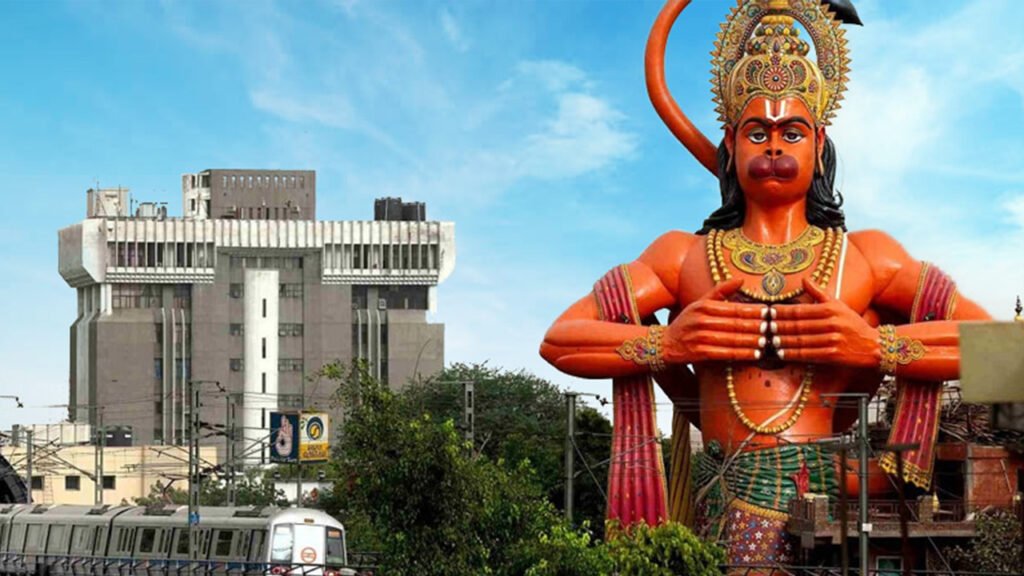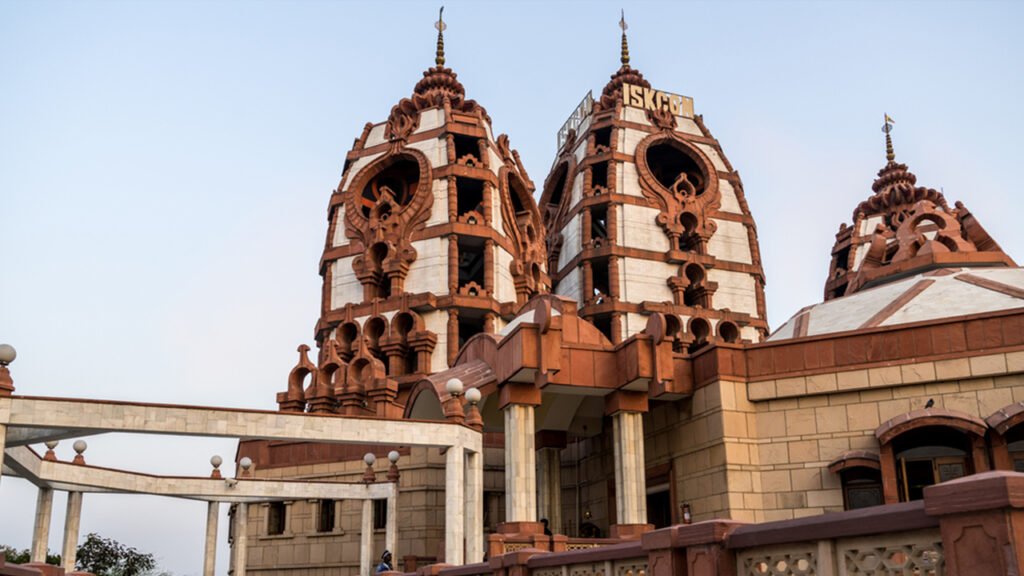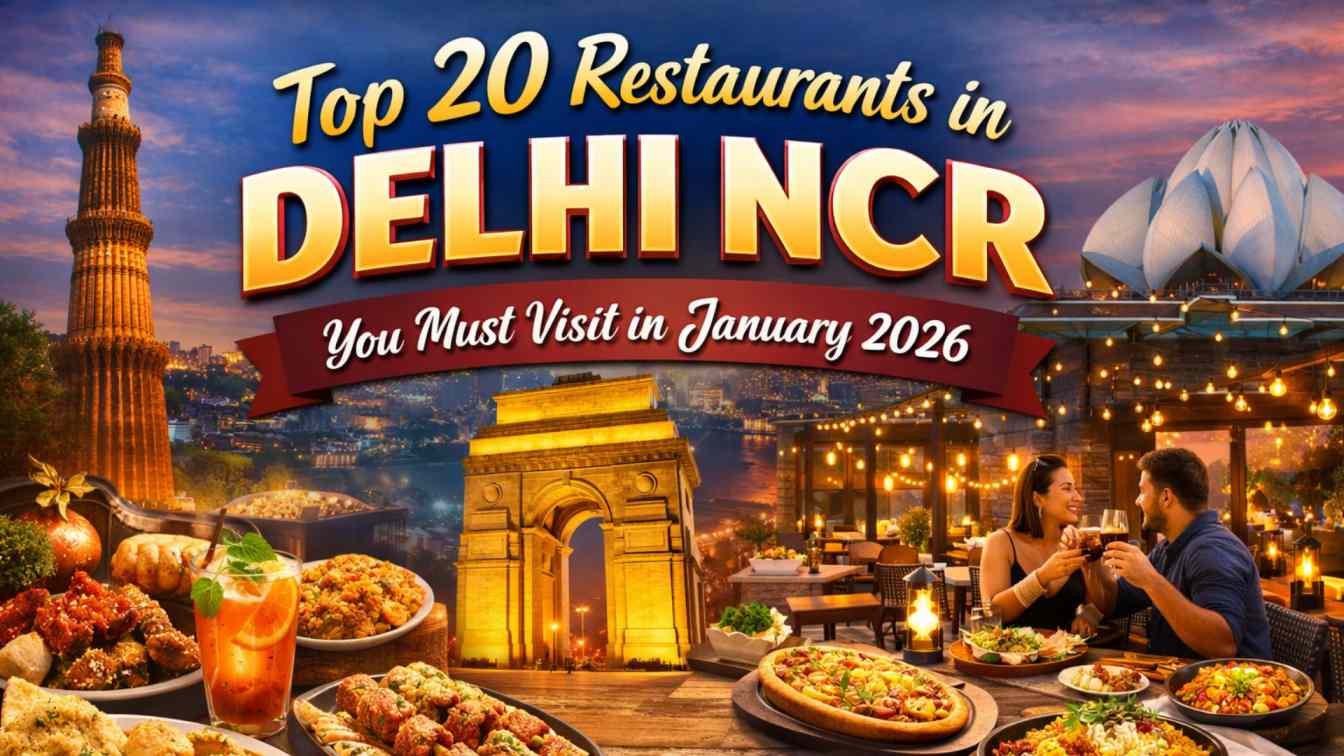Along with Incredible, Delhi is one of the most religious states in India. Most of the temples in Delhi are named after the Hindu god to whom they belong. Here, let’s take a look at the top 10 temples in Delhi:
Bahai Lotus Temple

The unique architecture of Bahai Lotus Temple is easily recognizable and is one of the most famous temples in Delhi. Nowadays, Lotus Temple is on the tentative the tentative UNESCO World Heritage List and one of the most visited temples in Delhi. Its planning and construction began in the 1970s after Bahai practitioners donated all their life savings to the temple. In 1986, the temple was opened to the public.
Time: 8:30 a.m.–5:00 p.m., Tuesday–Sunday (Monday closed)
Google Maps: Click Here
ALSO READ: TOP 8 COUPLE-FRIENDLY RESTO-BAR IN NOIDA
Swaminarayan Akshardham

One of the largest Hindu temples in the world is Swaminarayan Akshardham Temple. This temple was built in less than five years with the hard work of 7,000 artisans and 3000 volunteers. It’s one of the most stunning inside and out temples in Delhi. Once you reach this temple, you have to go through a security check and submit your belongings, such as electronics. Taking pictures is strictly forbidden here.
Time: 10:00 a.m. to 7:00 p.m., Tuesday to Sunday (Monday closed)
Google Maps: Click Here
Gurudwara Bangla Sahib

Gurudwara Bangla Sahib is one of the most prominent Sikh temples in New Delhi. It is dedicated to the eighth Sikh Guru, Guru Har Krishnan. Anyone and everyone is allowed to visit this gurudwara. The visitors can either sit in the kirtan hall and enjoy the kirtan or else stroll around Sarovar (a holy pond) and have langar prasad in the langar hall area. Before leaving the Gurudwara, people can take Kada Parsad from the parsad window.
Time: 24/7 open
Google Maps: Click Here
ALSO READ: Noida’s Top 8 Family Restaurants
Hanuman Mandir, Karol Bagh

Only by looking at this temple will you understand why it is known as Sankat Mochan Hanuman Mandir and why it is one of the most famous temples in Delhi. The statue of Hanuman Ji has now become the iconic symbol of Delhi. While traveling on the Delhi Metro Blue Line, you can see this temple. The entry of this temple is the gaping mouth of the monster slain by Hanuman Ji. Mahant Nagababa Sevagir Maharaj built this temple after having a vision of Lord Hanuman. It took many years to construct and was completed in 2007.
Time: 6:00 a.m. to 10:00 p.m., daily
Google Maps: Click Here
Laxminarayan Mandir (Birla Mandir)

It was built in 1939 and is one of the largest Hindu temples in Delhi. This temple was inaugurated by Mahatma Gandhi on the condition that entry would not be restricted to higher-class Hindus. The temple was built at a time when caste was still dominant in India. As the name suggests, this temple is dedicated to Narayan Ji and his consort, Lakshmi Ji.
Time: 4:30 a.m. to 1:30 p.m. and 2:30 p.m. to 9:00 p.m., daily
Google Map: Click Here
ALSO READ: Discover the heart of spiritual places in Delhi
ISKCON Temple

Sri Sri Parthasarathi Mandir, or ISKCON Temple, is one of the most unique and beautiful temples in Delhi. Ritual prayer ceremonies are once-in-a-lifetime events where priests sprinkle the crowd with rose petals and holy water while ecstatic followers clap, sing, and dance.
Time: 4:30 a.m. to 8:00 p.m. and 4:15 p.m. to 9:00 p.m., daily
Google Maps: Click Here
Kururattha-Khemararam (Wat Khmer New Delhi)

It is also known as Wat Khmer New Delhi or the Cambodian Monastery of New Delhi. It is a small temple that is hidden next to the busy Mehrauli-Gurgaon Road. It is the only Cambodian mandir in Delhi, so it is very special. It’s not as well known as it should be, though.
The Khmer-Hindu Theravada Buddhist Society built it in 1994, and the Khmer Buddhist society takes care of it.
Time: 6:00 a.m. to 12:00 p.m. and 1:30 p.m. to 6:00 p.m., daily
Google Maps: Click Here
ALSO READ: The Ultimate Guide to the Best Picnic Spots in Delhi NCR
Tibetan Monastery (Majnu ka Tilla)

People call Majnu ka Tilla “Delhi’s Little Tibet.” It has two famous and one-of-a-kind Tibetan Buddhist buildings that are next to each other in a quiet area.
After the Dalai Lama was sent into exile to Dharamshala in northern India in 1959, Tibetans began coming to Delhi. People who were refugees moved to this area and were given land by the government. About 3,500 second-generation Tibetans live in the area now.
Two churches that look like they were built in the traditional Tibetan way. They have prayer wheels, paintings made of butter, holy images, sacred texts, and candles. Monks quietly walk around and say prayers.
Time: 6:00 a.m. to 8:00 p.m., daily
Google Maps: Click Here










